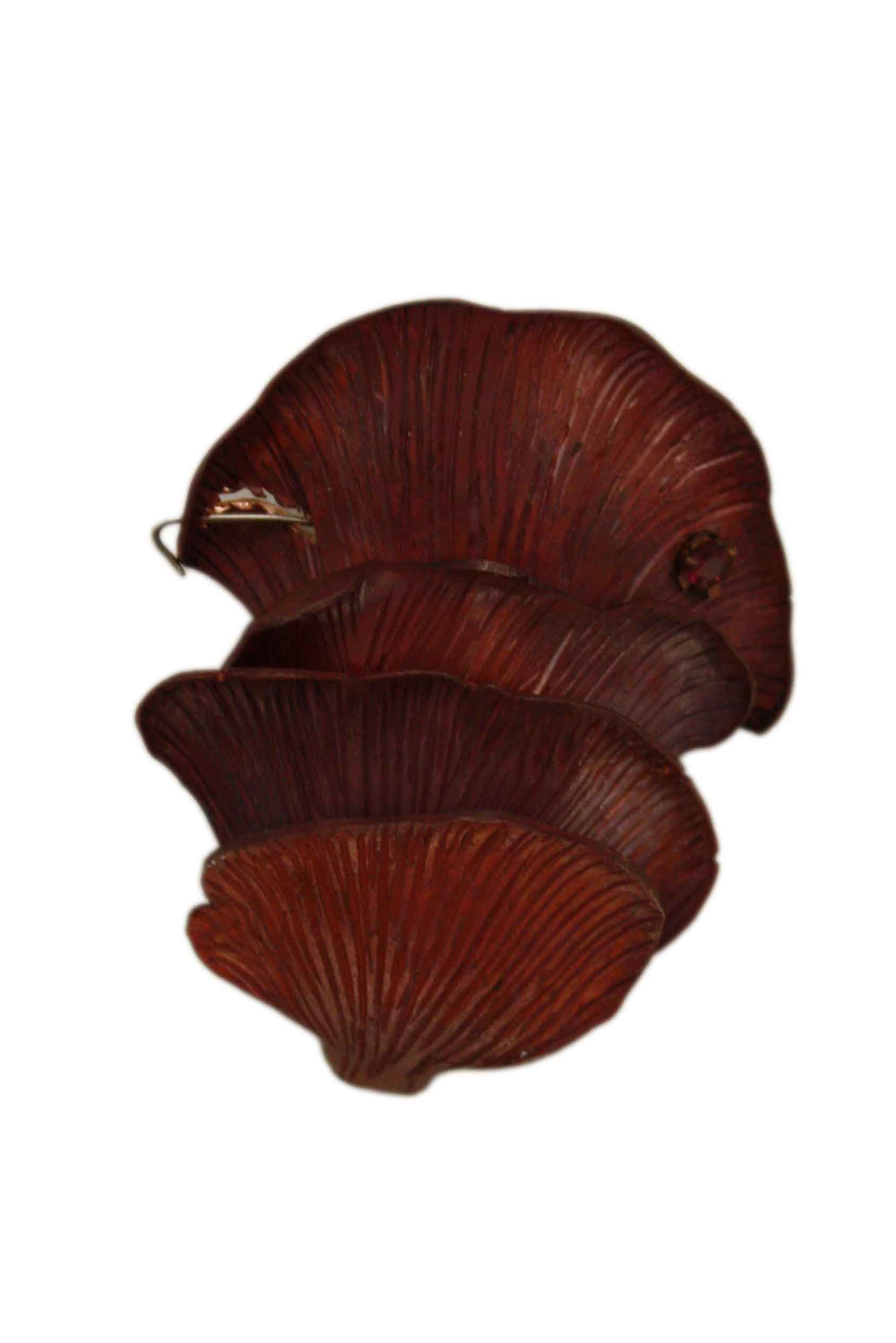MYCOLOGY
Namibian rubelite garnet and copper ring
Carved Pearl and patinated copper ring
MYCOLOGY COLLECTION
Presenting Mycology, a study of the beauty of Oyster Mushrooms Pleurotus ostreatus and Pleurotus djamor. These fungi were selected due to their aesthetic qualities: their naturally ethereal colours and sinuous gills, and their mycoremediative properties. Fungi-based technology is used to decontaminate the environment, removing toxins such as heavy metals from the soil. The collection’s result is a series of colourful, singular pieces, which combine precious and non-precious materials, with an underlying focus on ethical production.
The aesthetic qualities of the Oyster Mushroom associate it to the more classical subjects of traditional fine jewellery: oysters and pearls. This is an association I have played with in my use of carved baroque pearls in grey and white, reflecting their fungal counterparts. While the iridescent nacre of pearls has been prized in adornments for hundreds of years and the subjects of flora and fauna are typically celebrated in jewellery, I feel that the mushroom and its many varied possibilities have been largely overlooked. I strive to correct this oversight and prove that the mushroom rivals any flowery decoration. Aluminium is the main material used in these pieces’ creation, as its lightness and durability make if ideal for cultivating pieces on a scale that is not typically possible in fine jewellery, but still comfortable and practical to wear. The dusky pink and purple colour palette, a typically feminine colour scheme, work in contrast to its industrial reputation, and I have explored the potential of anodisation to create a delicate range of watercolour hues.
Mycoremediation works as an analogy for my hopes for the future of the jewellery industry. The jewellery industry is reluctantly starting to reflect on the human rights abuses and environmental damage that the extraction of precious metals and gemstones have caused or, in the very least, been associated with. However, as a new generation of conscientious and ethically aware artists and manufacturers enter the trade, I am optimistic that they will, like the mushrooms, clean up the toxins in the industry, both literally and figuratively. This is integral to my current and future practice as a jewellery designer and maker, and has guided the materials I have used. All stones used are ethically sourced and, whilst no certified ethical source of aluminium exists, the majority of aluminium in existence today is recycled, and it’s estimated that 90% of the aluminium ever mined is still in circulation today, as this process costs just 5% of what it would cost to mine new aluminium.






